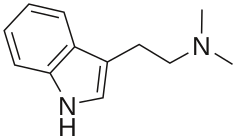
Back অ্যাসিড রক Bengali/Bangla Acid rock Czech Syrerock Danish Rock ácido Spanish Acid rock Basque اسید راک Persian Acid rock Finnish Acid rock French Acid rock Galician אסיד רוק HE
| Acid rock | |
|---|---|
| Stylistic origins | |
| Cultural origins | Mid-1960s, United States |
| Derivative forms | |
| Fusion genres | |
| Local scenes | |
| San Francisco Sound | |
| Other topics | |
| Part of a series on |
| Psychedelia |
|---|
 |
Acid rock is a loosely defined type of rock music[1] that evolved out of the mid-1960s garage punk[3] movement and helped launch the psychedelic subculture. While the term has sometimes been used interchangeably with "psychedelic rock", acid rock also specifically refers to a more musically intense, rawer, or heavier subgenre or sibling of psychedelic rock. Named after lysergic acid diethylamide (LSD), the style is generally defined by heavy, distorted guitars and often contains lyrics with drug references and long improvised jams.
Compared to other forms of psychedelic rock, acid rock features a harder, louder, heavier, or rawer sound. Much of the style overlaps with 1960s garage punk, proto-metal, and early heavy, blues-based hard rock. It developed mainly from the American West Coast, where groups did not focus on the novelty recording effects or whimsy of British psychedelia; instead, the subgenre emphasized the heavier qualities associated with both the positive and negative extremes of the psychedelic experience.
As the movement progressed into the late 1960s and 1970s, elements of acid rock split into two directions, with hard rock and heavy metal on one side and progressive rock on the other. In the 1990s, the stoner metal genre combined acid rock with other hard rock styles such as grunge and doom metal, updating the heavy riffs and long jams found in acid rock and psychedelic-influenced metal.
- ^ a b Browne & Browne 2001, p. 8.
- ^ Hull 2003, p. 380.
- ^ a b c Hoffmann 2004, p. 1725.
- ^ Knowles 2010, p. 199.
- ^ Jasinski 2012.
- ^ Drabløs 2016, p. 64.
- ^ Freeman & Freeman 1996, p. 10.
- ^ Cite error: The named reference
synwas invoked but never defined (see the help page). - ^ Bill 1984, p. 37.
- ^ Reynolds, Simon (July 1996). "Krautrock". Melody Maker.
- ^ "Loyola Entertainment Law Journal". Loyola Entertainment Law Journal. 6: 90. 1986.
- ^ Holm-Hudson 2013, p. 85.
- ^ Stoner Metal at AllMusic.